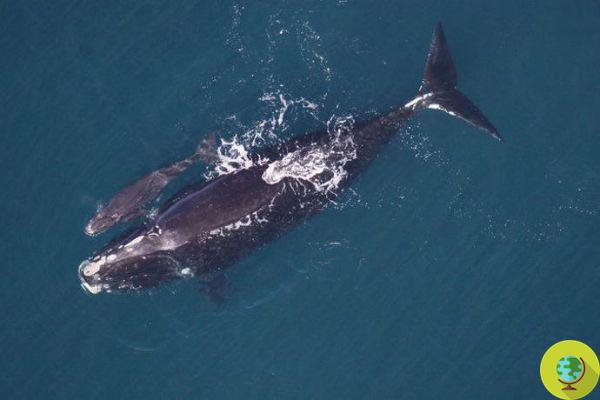
The North Atlantic right whale is endangered. There are no new babies this year. The species is destined to disappear
He is about to end up run over, his mother saves himThe North Atlantic right whale is endangered. There are no new babies this year. The species is destined to disappear.
An increasingly uncertain future awaits the North Atlantic right whales. Trained observers search for newborns from December to the end of March flying over the coasts of Florida and Georgia, where female whales typically give birth but have not spotted any new born this season. If until the end of the month, no cubs are sighted, it will be the first time since 1989 that it has occurred.
Also known as Eubalaena glacialis, this creature is one of three species belonging to the genus Eubalaena. About 300 North Atlantic right whales live in the North Atlantic Ocean.
Barb Zoodsma, who oversees the Southeastern United States whale recovery program for the National Marine Fisheries Service, said that the lack of newborns could signal the "beginning of the end" of the species.
"It's a pivotal time for right whales," Zoodsma said. "If we don't take serious action and understand the gravity of the situation, it could very well be the beginning of the end."
Observers were already alarmed in December by the lack of female whales off the southeastern coast of the United States. as reported by NPR. Whales typically live outside New England and Canada, but pregnant females head south starting in November to give birth and raise their young in warmer waters. But this year, observers didn't see any females in the south until the end of January.
There are only about 450 North Atlantic whales, and only 100 of them are breeding females. Seventeen of the animals died in 2017 and one was found this year. Many have been hit by ships or entangled in nets, including the ropes between floating buoys and lobster traps. These can injure whale fins, cause infections and weaken them.
The situation was not rosy even in 2017, when only 5 pups were sighted during the birth season. On average, there were 17 new borns each year.
There is still a faint hope. Scientists will look for any late-born babies. According to right whale researcher Charles “Stormy” Mayo of the Center for Coastal Studies in Provincetown, it's possible that some whales have given birth elsewhere. Additionally, females take three or more years between pregnancies, so births can fluctuate from year to year. It had already happened in 2000, when there was only one born, while the following year the children were 31.
Let's really hope this isn't the beginning of the end.
READ also:
- The slow dying of right whales: threatened with extinction by man
- The whale deaths of the last 40 years are the fault of man
Francesca Mancuso


























